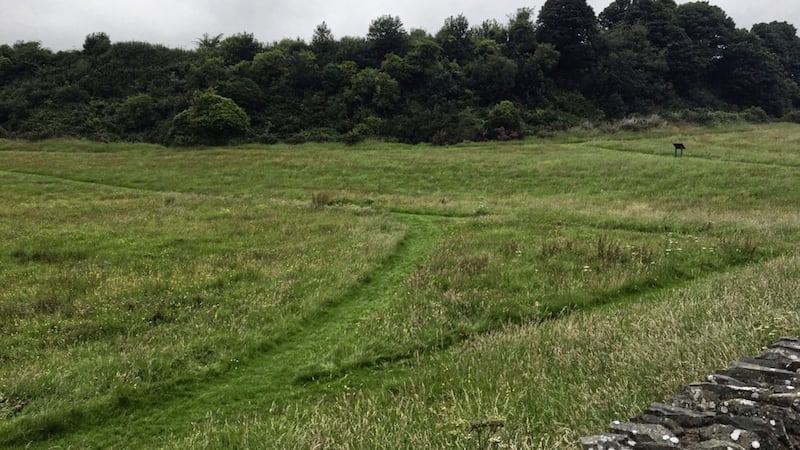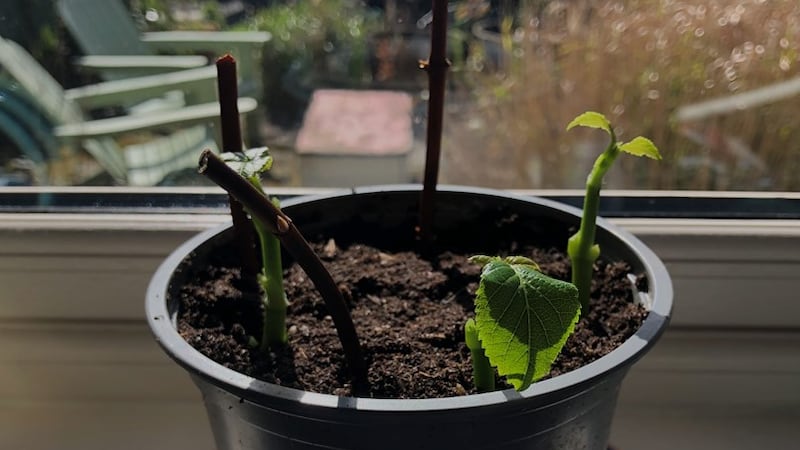WHEN is a hill not a hill? When it is a fairy fort, of course. They are found throughout Ireland and often mistaken for an overgrown hump of land in among hills and drumlins.
Some were the site of sacred stone circles or the homes of ancient Irish kings, but most were raths, or hill forts or simple dwelling places.
Some of the biggest ones have been overtaken by subsequent cultures and you will often find the remains of Norman castles and Christian churches – many of them still in use – built upon sites that were previously occupied by our ancient ancestors.
The Irish words ‘lis’, ‘dún’ and ‘rath’ in placenames will often give you a clue to a the history of a particular area – ‘lis’ refers to an earthen ring fort, while dún and rath are also Irish words for fort.
Although known as the Mound of Down and most commonly associated with the 12th century Norman invader John De Courcy, this man-made hill just on the outskirts of Downpatrick (Dún Pádraig), is also known as Rath Celtair – Celtchar was a warrior who features in the Ulster Cycle of Irish folklore, notably in the Táin, which associates this site with several centuries before Christianity arrived in Ireland.
Despite living close to it, I had not visited in well over 30 years. I think the last time I had walked up to it I had a carry-out and Charlie Haughey and Margaret Thatcher were still in power.
Then you had to clamber through a gap in the undergrowth, scramble up a bank and trust to luck you didn’t get snarled up in a net of brambles, trip over a fox hole and tumble into a bed of nettles – and that was before a can had even been cracked open.
But coming out into an inner ditch, which surrounds the actual mound, there was a sense of adventure back then and of rediscovering a hidden place.
Now the access is clearly marked and steps have been cut into the outer bank, making a visit a much more sensible adventure, but, thankfully, much of growth has been left to flourish and there is a sense of ancient history lurking just beneath the re-established wildness.
Foxgloves, whin and hawthorn are abundant, as is willowherb, a tall and distinctive purple-flowering weed which was accidentally introduced into Ireland and which has become widespread.
This is also a forager's paradise – the blackberries are still just starting to come through, green and hard, but there was an abundance of raspberries growing last week, still not fully ripe though I was able to gather enough mature ones to bring home and make a small ramekin of jam, sweetened with Co Down honey.
The ascent to the top is quite steep and can be mucky on a wet days, but the views over much of Co Down are superb – the Mournes to the south, the Dromara hills to the west, Divis to the north and just below the mound is the River Quoile.
Much of land round here was marshland until quite recently and prone to flooding until a drainage scheme created the Quoile Estuary.
Looming over the site is Down Cathedral, where John De Courcey is said to have brought the remains of St Patrick, along with St Brigid and St Columcille, and buried them in the adjoining cemetery.
The nearby Quoile and the abundance of berries makes this an area rich in wildlife. From the summit of the mound I could see dozens of swans on the Quoile and make out a heron standing on a bank.
Flitting in among the bushes you will also see long-tailed tits and willow warblers, Later in the year when the berries are mature bullfinches and fieldfare come to feed.








